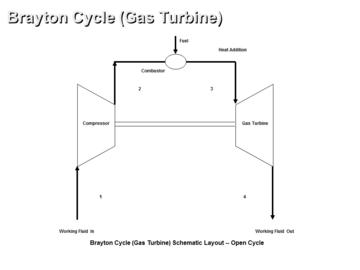Brayton Cycle (Gas Turbine) Ideal vs Real Operation for Propulsion Application Analysis
English
30-Day Money Back Guarantee
Full Lifetime Access
Self-Paced
Finish in
60 mins!
Finish in
60 mins!
Made for for
Employees
and
Supervisors
Employees
and
Supervisors
No Certificate
Provided
Provided
Mobile -
Friendly
Access
Friendly
Access
What you'll learn
In this course, the student gets familiar with the Brayton Cycle and its T - s diagram
Ideal vs real operation and major performance trends
Skills covered in this course
Description
In this course material, the open, simple Brayton Cycle used for stationary power generation is considered providing thrust instead of power output. In order to keep the scope of the thrust analysis simple, the working fluid exiting gas turbine expands to the atmospheric conditions -- final working fluid exit pressure is equal to the ambient pressure.
The Brayton Cycle thermal efficiency is presented only for the air as the working fluid. The thermal efficiency derivation is presented with a simple mathematical approach. The Brayton Cycle is presented in a T - s diagram and its major performance trends (specific propulsion output and propulsion output) are plotted in a few figures as a function of compression ratio, gas turbine inlet temperature, working fluid mass flow rate and both isentropic compression and expansion efficiency. It should be noted that this course material does not deal with costs (capital, operational or maintenance).
Table of Contents
Brayton Cycle (Gas Turbine) for Propulsion Application
Analysis
Assumptions
Governing Equations
Input Data
Results
Conclusions
Author
His engineering professional experience of forty (40) years includes performing analytical modeling and computer modeling of physical properties, power cycles, power cycle components/processes and compressible flow components. Also, it includes conducting conceptual design, analysis and evaluation of energy conversion systems for basic and simple power and propulsion cycles.






